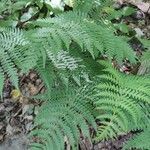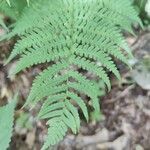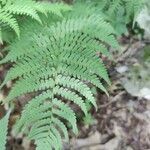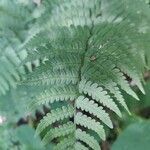Leaves monomorphic, green through winter, 30--100 × 10--25 cm. Petiole 1/4--1/3 length of leaf, scaly at base; scales in dense tuft, pale tawny. Blade bluish green, ovate-lanceolate, pinnate-pinnatifid to 2-pinnate at base, leathery, not glandular. Pinnae ± in plane of blade, lanceolate; basal pinnae lanceolate, slightly reduced, basal pinnules longer than adjacent pinnules, basal basiscopic pinnule longer than basal acroscopic pinnule; pinnule margins shallowly crenate to nearly entire. Sori near margin of segments. Indusia lacking glands. 2 n = 82.
A fern.




